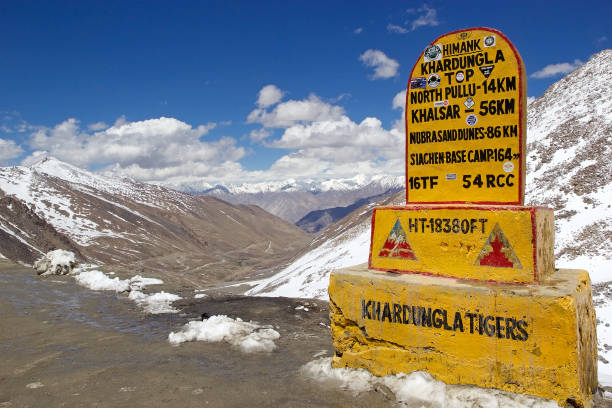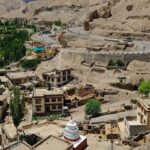

Khardung La is a dream destination for motor enthusiasts around the world. At an altitude of 5,359 meters (17,582 feet), it’s often touted as the highest motorable pass, though technically, it might not hold the record. Nestled in the Ladakh Union Territory, India, this iconic pass serves as the gateway to the Shyok and Nubra valleys, positioned to the north of the Ladakh range of the Himalayas.
Constructed in 1976 and opened to the public in 1988, Khardung La has become a bucket-list destination for adventure bikers and SUV adventurers. The pass, managed by the Border Roads Organisation, is vital for transporting supplies to the Siachen Glacier. Known as the ‘Pass of Lower Castle,’ it offers incredible views of winding roads and sweeping valleys. The stunning landscapes and crisp mountain air attract travelers from all corners of the globe.
Historical Significance:
Khardung La was historically a key caravan route linking Leh to Kashgar in Central Asia, used by thousands of horses and camels annually. During World War II, it was considered for transporting war materials to China.
Top Attractions:
The breathtaking views from the pass itself are the main attraction.
What To Do:
Enjoy the thrilling drive and capture stunning photographs of the high-altitude landscape.
Did You Know?
- Strategic Importance: Khardung La is one of the highest motorable passes in the world, providing a crucial route for military supplies and trade between Leh and the Nubra Valley.
- Thrill Factor: The pass offers stunning panoramic views of the surrounding mountains, making it a popular stop for adventurous travelers.
Map
Info
Travel Tips:
- Carry a basic medical kit and your permits.
- Bring alternatives to oxygen, like camphor.
- Check your vehicle thoroughly before starting.
- Extra batteries and a camera are handy.
- Stock up on food as landslides can cause delays.
- Pack additional warm clothing.
- Consider carrying a portable oxygen cylinder.
- Drink plenty of water while ascending.
- Limit your stay at the top to 10-15 minutes to avoid altitude sickness.







